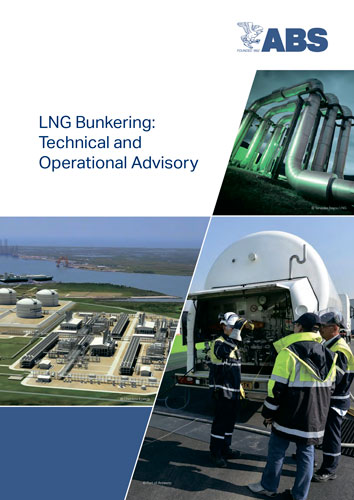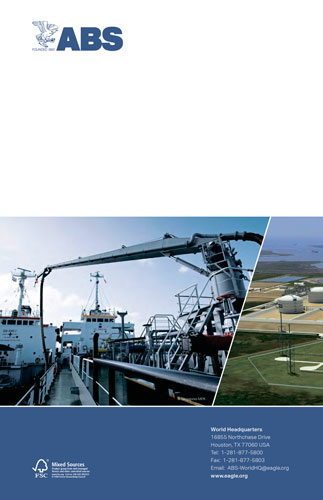ABS LNG Bunkering: Technical and Operational Advisory / ABS Бункеровка жидкого натурального газа: Технические и эксплуатационные консультации
Книга на английском языке
Owners, operators, designers and shipyards around the world are considering the advantages that operating on natural gas may provide. However, when considering any new or evolving technology, it is important to have a clear understanding of not only the benefits, but the challenges that may be involved. This Advisory has been developed in order to respond to the need for better understanding by members of the maritime industry of the issues involved with bunkering vessels with natural gas. It is intended to provide guidance on the technical and operational challenges of LNG bunkering operations both from the bunker vessel's perspective (or land-side source) and from the receiving vessel's perspective. Some of the key areas that are addressed in this Advisory are critical design issues, methods of analysis, and current thinking on possible solutions to the requirements of regulations and safe practice, as well as important areas of operational process, training and safeguards.
The regulatory framework is referenced, but this Advisory is not be rule or region-specific. For further information and insight into the regulatory framework associated with LNG bunkering in North America, refer to the ABS report, Bunkering of Liquefied Natural Gas-fueled Marine Vessels in North America. The Advisory does, however, provide guidance on the ramifications of the various requirements on vessel design and operational issues, and how they impact the LNG bunkering process. This information can be useful to any owner, operator, designer or shipyard considering LNG fuel so that an informed decision can be made.
Contents
Introduction
General Information on LNG
General Considerations for LNG Bunkering
Key Characteristics Affecting Tank Capacity for Bunkering LNG
Bunkering (Loading) Temperature
Filling Limit
Reference Temperature
Loading Limit
Effect of Temperature and Pressure on Loading Limit
Usable Capacity
Vessel Compatibility
Operational Issues Aboard the Receiving Ship
During the Bunkering Process
Other Operational Phases Related to LNG Storage
Simultaneous Cargo Operations
Special Equipment Requirements Aboard the Receiving Ship
Bunker Stations
Bunker Piping Systems
LNG Storage Tanks and Systems for Monitoring and Control of Stored LNG
Operational and Equipment Issues from the Supplier Side
Bunkering from Onshore Facility
Bunker Vessels
Supplier's Tank Types
Supplier's Tank Pressure and Temperature
Equipment and Operational Issues
Bunker Operations
Sequence
Emergency Procedures
Responsibilities
Manning
Procedures and Manuals
Checklists
Crew Training and Certification
Commercial Issues and Custody Transfer
Pricing Basis
Custody Transfer
Fuel Specifications and Quality
Regulatory Framework
Regulatory Organizations and Required Approvals
Overview of Regulations
Safety and Risk Assessments
Major Hazards
Safety and Security Zones
Risk Assessment Methodology and Reporting
Simultaneous Operations (SIMOPS) Study
List of Guidance Documents and Suggested References
Appendix - LNG Characteristics
Typical LNG Chemical Components and Composition
Typical LNG Heating Values. Methane Number and Wobbe Index
Typical LNG Density
100 Percent Methane Saturated Properties
List of Tables
Table 1 National Approaches to LNG Bunkering in Europe
Table 2 LNG Bunkering Initiating Events and Causes
Table 3 Likelihood Categories
Table 4 Representative Consequence Categories
Table 5 Risk Levels
List of Figures
Figure 1 Typical Atmospheric Tank Loading Limit
Figure 2 Typical Pressurized Tank Loading Limit
Figure 3 Inerting and Purging Sequence of LNG Bunker Hose and Piping
Figure 4 Typical Isolating Flange
Figure 5 Rollover After Stratification
Figure 6 Typical Arrangement of Bunker Piping and Connections
Figure 7 Typical Methods of Bunkering a Gas Fueled Ship
Figure 8 Marine Terminals for Loading LNG Bunker Barges.
Trucks. ISO Containers and Third-party Vehicles
Example of Safety and Security Zones
Figure 9




